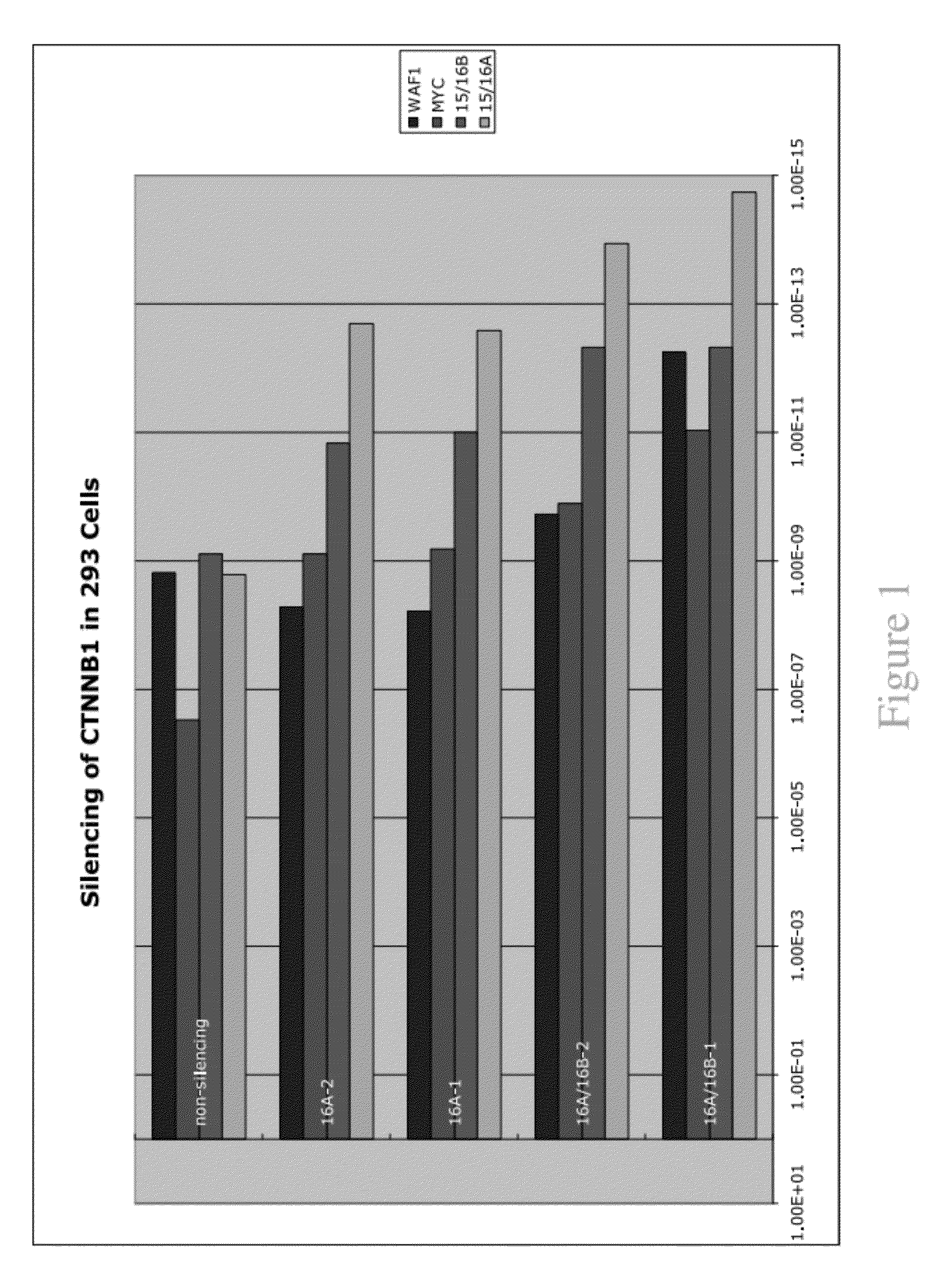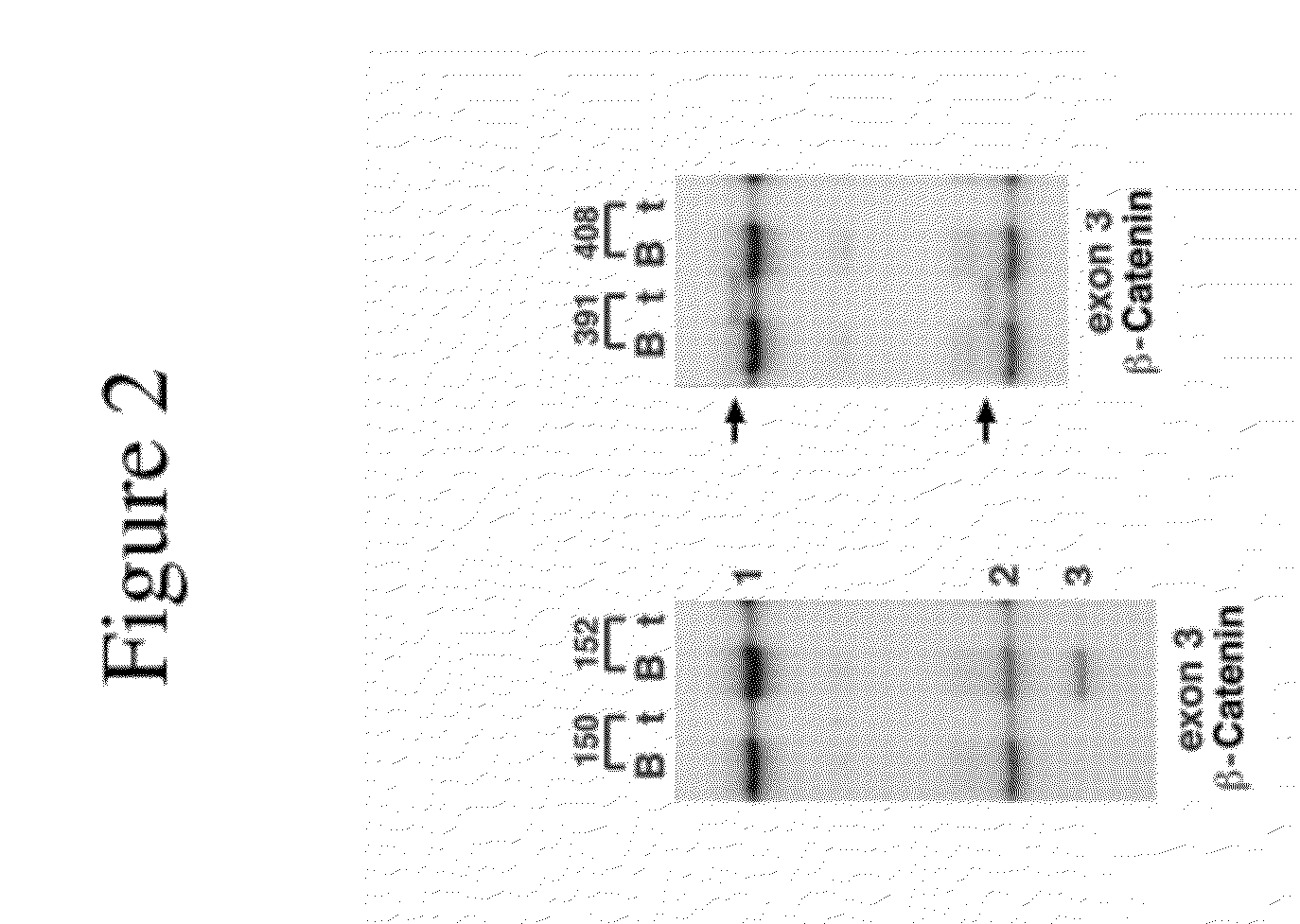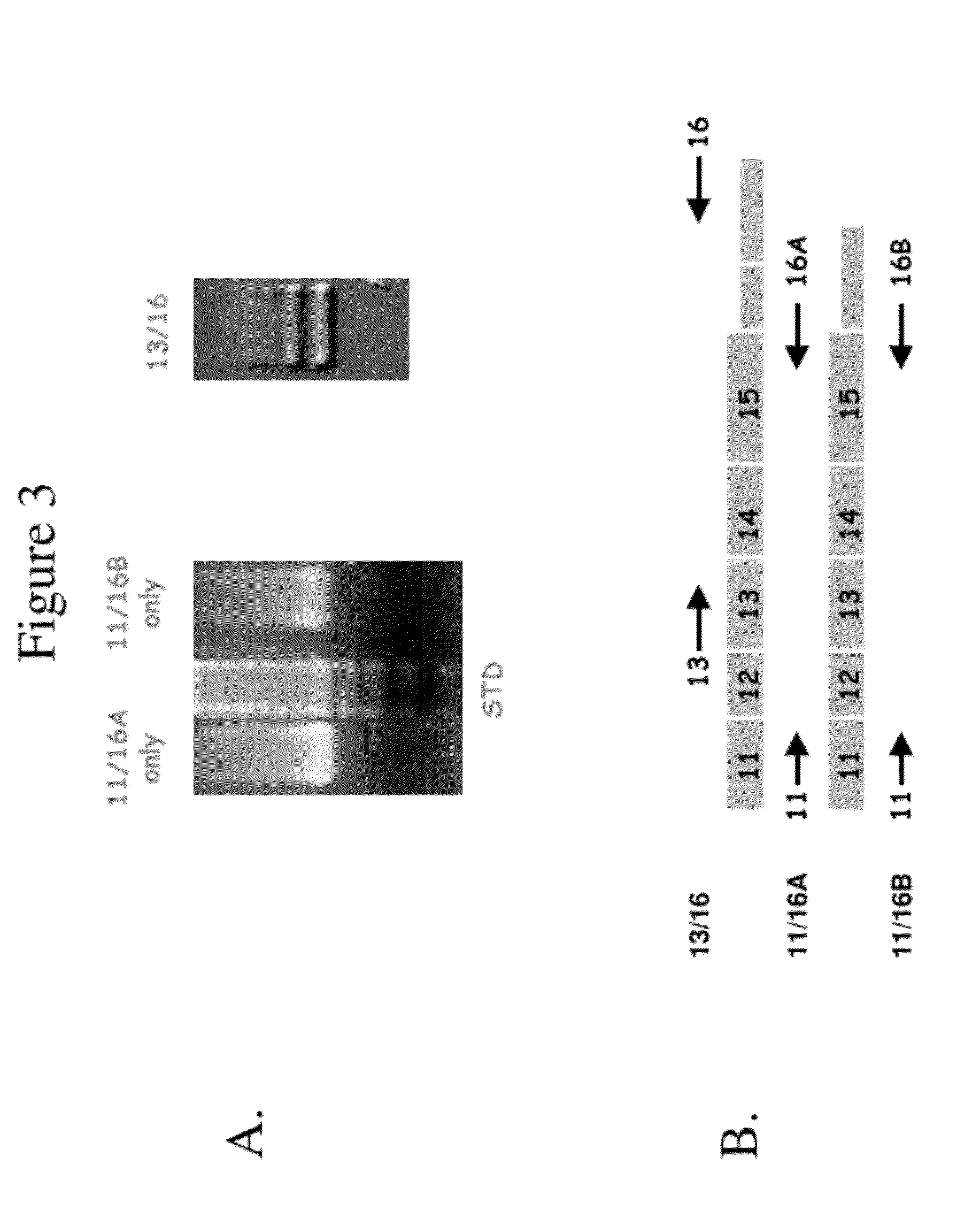Method of diagnosing and treating cancer using b-catenin splice variants
a cancer and variant technology, applied in the field of cancer diagnostic and treatment using b-catenin splice variants, can solve the problems of insufficient the current methods of prevention and treatment are less than optimal, and it is difficult to evaluate the metastatic potential of cancer, pre-neoplastic and peri-neoplastic cells, etc., to achieve accurate assessment
- Summary
- Abstract
- Description
- Claims
- Application Information
AI Technical Summary
Benefits of technology
Problems solved by technology
Method used
Image
Examples
example 1
Real Time RT-PCR analysis
[0360]Resection specimens from six patients were fully submitted in histology cassettes and stored at −70 degrees C. until Real Time RT-PCR analysis of CTNNB1, MYC and WAF1.
[0361]Serial 5-micron frozen sections were cut from each histology cassette and representative foci of normal (N=11), low grade dysplasia (N=11), high grade dysplasia (N=8), carcinoma in-situ (N=4), and invasive squamous cell carcinoma (N=11) from the six fully submitted esophageal resections were chosen based on histologic review by a pathologist (MR) of corresponding hematoxylin and eosin stained slides using accepted histologic criteria. RNA was isolated from laser capture microdissected tissue foci using a standard Trizol extraction protocol in the presence of yeast carrier tRNA. Approximately 25% of the resultant RNA was used from each LCM sample for the synthesis of cDNA. Using the Thermoscript RT-PCR Synthesis (Invitrogen) System, oligo dT and random hexamer primers were employed t...
example 2
Characterization of Exon 3 Mutations
[0362]The frequency of exon 3 CTNNB1 mutations was characterized. It was demonstrated that there is a change frequently involved in or associated with dysregulation of the CTNNB1 gene. The expression of the CTNNB1 gene was compared with transcript variants and the expression of downstream targets such as MYC and WAF1 (p21) across the neoplastic progression of ESCCs from a high-risk region of China. Mutational analysis was performed on 56 tumors and corresponding germline (blood) DNA using primers to exon 3 of CTNNB1 and SSCP DNA sequencing gels. Quantitative Real Time RT-PCR was performed on 41 foci representing the histologic spectrum from normal to invasive cancer using specific primer sets for alternative splice variants that differ by the presence (16A) or absence (16B) of a 159-bp non-coding segment of exon 16 of CTNNB1, in conjunction with downstream targets MYC and WAF1. Two unique mutations were identified in two of the 56 cases, consistin...
example 3
[0370]Gene expression values were transformed using natural log. Due to small numbers, LGD and HGD were analyzed together as DYS, and CIS and invasive squamous cell carcinomas were analyzed together as CA. The percent change in expression from normal to DYS and CA was estimated using linear mixed models including a random intercept for participant. Grade was described with two indicator variables that were treated as fixed effects. Due to the range of samples per specimen additional models with a fixed effect for the number of samples per specimen were examined to test for effect modification between the number of samples and histology (results not shown). All tests of statistical significance were two-sided. Statistical analyses were performed using S-PLUS (S-PLUS version 6.1 for Windows. Seattle (WA): Insightful Corporation; 2002).
PUM
 Login to View More
Login to View More Abstract
Description
Claims
Application Information
 Login to View More
Login to View More - R&D
- Intellectual Property
- Life Sciences
- Materials
- Tech Scout
- Unparalleled Data Quality
- Higher Quality Content
- 60% Fewer Hallucinations
Browse by: Latest US Patents, China's latest patents, Technical Efficacy Thesaurus, Application Domain, Technology Topic, Popular Technical Reports.
© 2025 PatSnap. All rights reserved.Legal|Privacy policy|Modern Slavery Act Transparency Statement|Sitemap|About US| Contact US: help@patsnap.com



